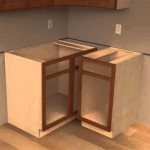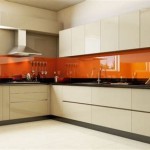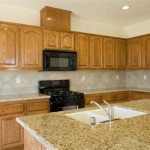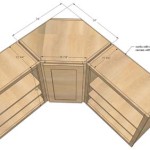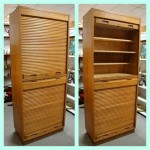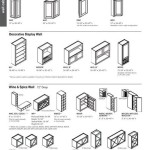Wine Rack Kitchen Cupboard: A Blend of Functionality and Elegance
The integration of a wine rack into a kitchen cupboard design represents a practical and aesthetically pleasing solution for wine storage. A well-designed wine rack kitchen cupboard offers a dedicated space for wine bottles, protecting them from detrimental environmental factors while contributing to the overall visual appeal of the kitchen. This article explores the considerations involved in selecting and integrating a wine rack into a kitchen cupboard, covering aspects of design, functionality, material selection, and installation.
Wine, a beverage susceptible to temperature fluctuations, light exposure, and humidity, requires specific storage conditions for optimal preservation. Traditional methods, such as dedicated wine cellars, are not always feasible for the average homeowner. A wine rack within a kitchen cupboard offers a compromise, providing a controlled environment that minimizes the impact of these factors. The enclosed space shields bottles from direct light, while the inherent insulation of the cupboard aids in maintaining a more consistent temperature. However, the proximity to heat-generating appliances, such as ovens and refrigerators, necessitates careful planning and potential mitigation strategies, which will be discussed further.
The design of a wine rack kitchen cupboard must consider both the functional needs of wine storage and the overall aesthetic coherence of the kitchen. Factors such as cabinet size, bottle capacity, rack orientation, and ventilation are all critical to achieving a successful integration. The selection of materials, ranging from traditional wood to contemporary metal and acrylic, also plays a significant role in defining the style and durability of the unit.
Key Considerations in Wine Rack Design
The design phase is paramount in creating a wine rack kitchen cupboard that serves its intended purpose effectively. Several key aspects need careful consideration. These include the physical dimensions of the cupboard, the bottle orientation, and the spacing between racks. The goal is to maximize storage capacity while ensuring easy access and adequate protection for the wine collection.
The dimensions of the cupboard will dictate the number of bottles it can accommodate. A larger cupboard allows for more bottles but may require additional structural support. Conversely, a smaller cupboard may be limited in capacity but can be more easily integrated into existing kitchen layouts. It is important to accurately measure the available space and plan the wine rack configuration accordingly.
Bottle orientation is another crucial design element. Horizontal storage is widely favored because it keeps the cork moist, preventing it from drying out and allowing air to enter the bottle, which can lead to oxidation and spoilage of the wine. While vertical storage is acceptable for short-term storage, it is not recommended for wines intended for aging. Therefore, the wine rack should be designed to accommodate horizontal bottle placement, ideally with a slight incline to ensure the cork remains in contact with the wine.
Spacing between racks is also essential. Sufficient spacing is needed to allow for easy insertion and removal of bottles without damaging the labels or other bottles. The spacing should also be sufficient to accommodate bottles of different sizes, as wine bottles are not standardized in their dimensions. Overly tight spacing can make it difficult to access bottles and may increase the risk of breakage. A typical spacing of 3.5 to 4 inches between racks is generally considered adequate.
Furthermore, the design should address potential sources of vibration. Vibration can agitate the wine and disrupt the aging process. The cupboard should be designed to minimize vibration from appliances or other sources. This can be achieved through the use of vibration-dampening materials or by isolating the cupboard from direct contact with vibrating equipment.
Material Selection for Wine Rack Durability and Aesthetics
The selection of materials for a wine rack kitchen cupboard is a critical decision that impacts both the durability and the aesthetic appeal of the unit. The choice of material should reflect the overall style of the kitchen while providing the structural integrity necessary to support the weight of the wine bottles. Common materials include wood, metal, and acrylic, each with its own advantages and disadvantages.
Wood is a popular choice for wine racks due to its natural warmth and versatility. It can be easily customized to match the existing cabinetry and can be stained or painted to achieve a desired finish. Different types of wood, such as oak, maple, and pine, offer varying degrees of durability and aesthetic characteristics. Hardwoods, such as oak and maple, are generally more durable and resistant to wear and tear. Softwoods, such as pine, are more affordable but may require more frequent maintenance.
Metal offers a contemporary and industrial aesthetic and is particularly suitable for modern kitchen designs. Stainless steel, wrought iron, and aluminum are common choices for metal wine racks. Metal is durable and resistant to moisture, making it suitable for use in kitchen environments. However, it can be prone to scratches and may require periodic cleaning to maintain its appearance. Metal can also conduct heat, which can be a concern if the cupboard is located near a heat source. Proper insulation may be necessary to mitigate this issue.
Acrylic is a lightweight and durable material that offers a sleek and modern aesthetic. It is transparent, allowing for easy visibility of the wine bottles. Acrylic is also resistant to moisture and UV light, making it a suitable choice for kitchen environments. However, it can be prone to scratches and may require careful handling to avoid damage. Acrylic wine racks are often used in contemporary kitchen designs that emphasize clean lines and minimalist aesthetics.
In addition to the primary material, the hardware used for the wine rack, such as screws, hinges, and shelf supports, should also be of high quality. These components play a crucial role in the overall structural integrity of the unit. Stainless steel or other corrosion-resistant materials should be used to ensure that the hardware does not rust or corrode over time.
Installation and Environmental Control
Proper installation is essential to ensure the stability and functionality of a wine rack kitchen cupboard. The cupboard should be securely mounted to the wall or floor to prevent it from tipping over, especially when fully loaded with wine bottles. The installation process should also take into account potential sources of heat and humidity, which can negatively impact the quality of the wine.
The location of the cupboard within the kitchen is a key factor. It should be positioned away from direct sunlight and heat sources, such as ovens, stoves, and dishwashers. These appliances can significantly raise the temperature inside the cupboard, which can accelerate the aging process and degrade the quality of the wine. A location on an interior wall, away from windows and appliances, is generally preferred.
Ventilation is also important to prevent the buildup of moisture inside the cupboard. Proper ventilation allows for air circulation, which helps to maintain a consistent temperature and humidity level. Small ventilation holes can be drilled in the back or sides of the cupboard to promote airflow. However, care should be taken to ensure that the ventilation holes do not compromise the structural integrity of the cupboard.
For those seeking more precise control over temperature and humidity, a wine refrigerator or cooler can be integrated into the kitchen cupboard design. Wine refrigerators are designed to maintain a constant temperature and humidity level, providing optimal conditions for wine storage. However, they are more expensive than traditional wine racks and require a power source.
Another consideration is the potential for vibration from appliances. As previously mentioned, vibration can agitate the wine and disrupt the aging process. The cupboard should be isolated from vibrating appliances, such as refrigerators or washing machines, to minimize this risk. This can be achieved through the use of vibration-dampening materials or by placing the cupboard on a stable and level surface.
Finally, consider the aesthetic integration of the wine rack into the overall kitchen design. The wine rack should complement the existing cabinetry and décor. The finish and style of the wine rack should be consistent with the other elements in the kitchen. This will create a cohesive and visually appealing space.
By carefully considering these factors, it is possible to create a wine rack kitchen cupboard that provides a functional and aesthetically pleasing solution for wine storage, preserving the quality of the wine while enhancing the overall design of the kitchen.

Introducing 3 Great Ways To Update Your Kitchen Cabinets Cabinet Wine Rack Design Corner

5 Inspirational Kitchen Wine Racks Solid Wood Cabinets Blog

Built In Wine Rack Base Units Diy Kitchens

Tea Or Wine Cabinet With Drop Down Drawer And Mason Jar Shelf Singapore

Easy Wine Rack For Metod Kitchen Cabinet Ers

Custom Wine Cabinet Design Ideas

Wine Storage Idea Built In Rack Home Decor Shelves

Kitchen Makeover Update Getting To The Finish Line In My Own Style

300mm Wine Rack

Wine Rack With Five Tier For Base Cabinets Chrome
Related Posts

